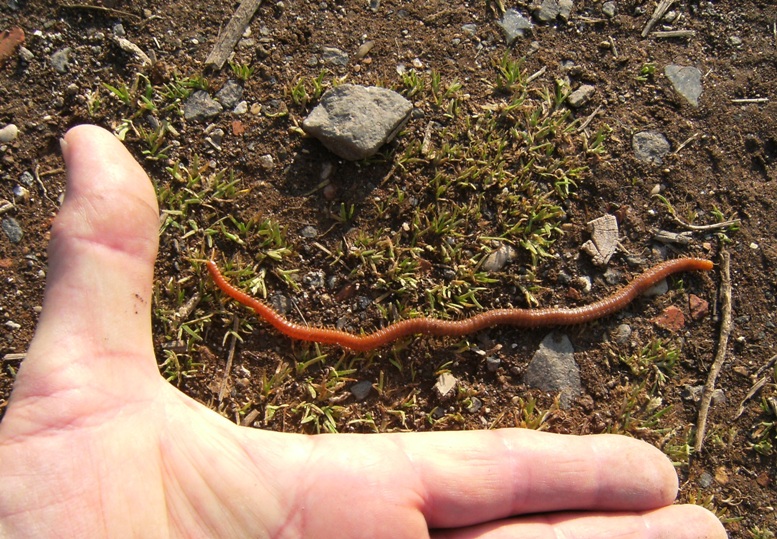|
|
|
|
|
Galleria Tassonomica
di
Natura Mediterraneo
|
|
|
| Autore |
 Discussione Discussione  |
|
|
elleelle
Moderatore Trasversale
    

Città: roma
Regione: Lazio

33313 Messaggi
Flora e Fauna |
|
|
Juventino
Utente Super
    
Città: Nizza
Regione: France

10135 Messaggi
Tutti i Forum |
 Inserito il - 14 febbraio 2009 : 10:55:11 Inserito il - 14 febbraio 2009 : 10:55:11


|
Mi pare anche..
Ciao!!
Link
L’école buissonnière |
 |
|
|
elleelle
Moderatore Trasversale
    

Città: roma
Regione: Lazio

33313 Messaggi
Flora e Fauna |
 Inserito il - 16 marzo 2009 : 12:47:58 Inserito il - 16 marzo 2009 : 12:47:58


|
Visto che Etienne ci ha fatto visita di nuovo, forse potrebbe chiarire anche cos'è questo.  Era lungo circa 13 -15 cm. Era lungo circa 13 -15 cm.
Non ho capito bene la differenza tra Geophilidae e Himantariidae: la secrezione rosata che emettono dalla parte inferiore dei segmenti dell'addome ce l'hanno tutti e due?
 luigi luigi
Aggiungo la foto di un altro, che era altrettanto lungo.
Immagine:

257,9 KB
|
Modificato da - elleelle in data 16 marzo 2009 12:56:07 |
 |
|
|
cingulata
Utente Junior
 
Città: Nice
Regione: France

48 Messaggi
Flora e Fauna |
 Inserito il - 18 marzo 2009 : 12:00:01 Inserito il - 18 marzo 2009 : 12:00:01


|
Dear Luigi,
Even if it is not viewed with high magnification, your 1st picture allow to confirm the family Himantariidae. Even it seems to have less legs than specimens we can found in France, it is probably Himantarium gabrielis (Linné, 1767) because I see the longitudinal and transversal wide dorsal sulci on the last trunk segment of the body, which have more or less the appearance of a cross. A paper of 1984 from italian myriapodologists on italian Himantarium spp. has shown that H. gabrielis can have less legs than what is usually known. To conclude with caution, we can say here Himantarium sp.
A beautiful picture ! 
See here for more detailed pictures of the "cross" on last trunk segment of H. gabrielis :
Link
The defensive secretions of the ventral pore groups existing on sternites of the body exist in many species of Geophilomorpha of almost all european families (and the species do not always use it when we capture them !). For this reason, it is not a valid criteria to recognize a family...! But I agree with you that in Himantariids the secretion seems to have a pink-red or red color, I have also sometimes seen it in some specimens which I have captured.
Best regards,
Etienne
|
 |
|
| |
 Discussione Discussione  |
|
|
|
 Natura Mediterraneo Natura Mediterraneo |
© 2003-2024 Natura Mediterraneo |
 |
|
Leps.it | Herp.it | Lynkos.net
|

 Forum
|
Registrati
|
Msg attivi
|
Msg Recenti
|
Msg Pvt
|
Utenti
|
Galleria |
Map |
Forum
|
Registrati
|
Msg attivi
|
Msg Recenti
|
Msg Pvt
|
Utenti
|
Galleria |
Map |